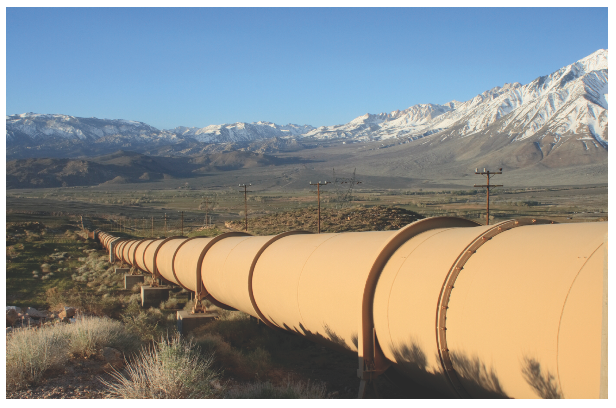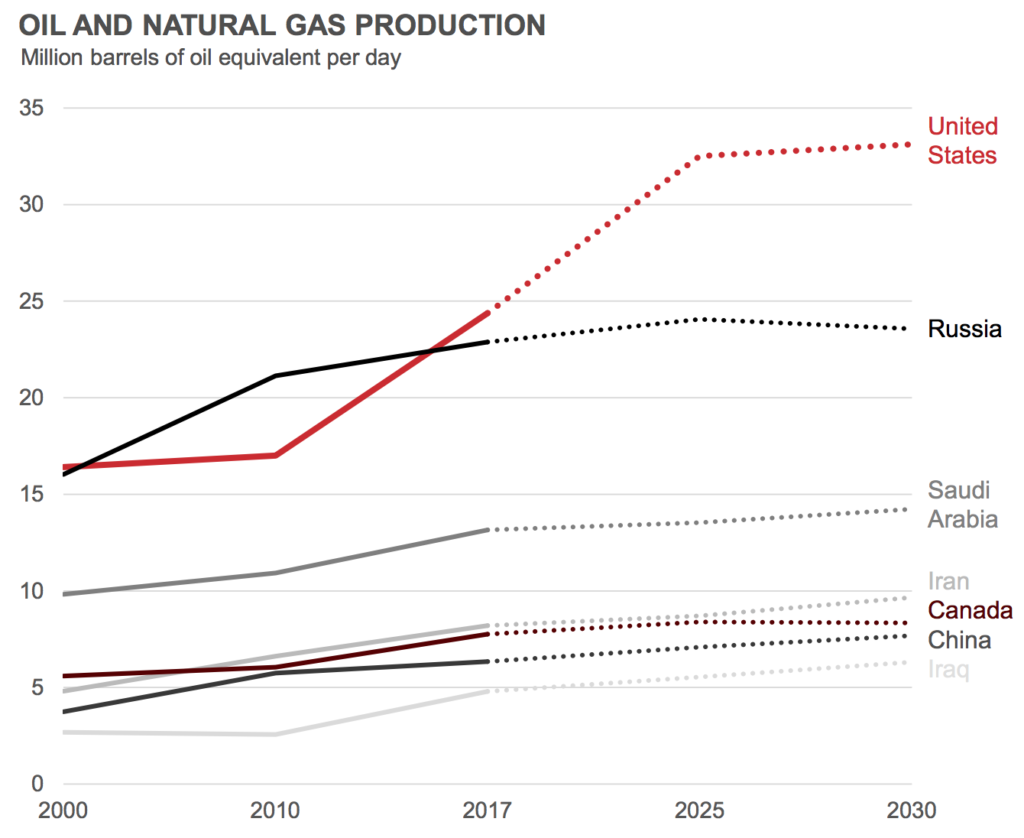
In a blog post last month, I wrote about my investments in real assets (see An opportunity to invest in real assets). Real assets are physical assets like real estate (homes, office buildings), infrastructure (bridges, pipelines), and commodities (oil, gold). These are tangible assets that require upfront investment to purchase and space to store or build.
I like investing in real assets. Real assets tend to generate stable income and often behave independent of common stocks. I am invested in commercial real estate assets through my REIT holdings. My REIT investments hold assets like office buildings, major shopping malls, cellular towers, and others. See this post where I discussed my real-estate holdings.
One real asset type that I don’t invest in is commodities—such as gold, silver, oil, etc. When it comes to real assets, I prefer those that generate stable cash flow. See this post on why I am not a fan of gold.
Besides real estate, one other real asset type that I had owned for several years is through Kinder Morgan (KMI). See my brief introduction to Kinder Morgan in this blog post from last year. Kinder Morgan is a natural gas pipeline owner/operator. It’s the single largest gas pipeline operator in the North America. Over 40% of all U.S. natural gas flows through its 70,000 miles of pipelines every year.
Oil and gas pipelines are quintessential real assets. They require huge upfront investments in both capital and time. But once they are on ground and operational, incoming cash flow is very stable, long tenured, and (mostly) independent of oil/gas price fluctuations. In case of Kinder Morgan, it has two-third of its cash flow tied to long-term take-or-pay contracts where customers keep paying it for reserved capacity regardless of their actual usage. These contracts are multi-year in nature—often up to 20 years long. In 2018, Kinder Morgan reported an average remaining contract life on its pipelines of six years. This is a stable recurring cash flow business model.
You might be thinking this is another one of my investment success stories. It’s not. At least, not so far. I had built my Kinder Morgan position over a period of three years—2013 to 2015. My average cost basis per share is about $34 share. Today, KMI is trading at about $20. If I sell my position today, I’d lose 40% of my invested capital. Over the years, I had also received dividends. They add up to about 15% of my cost basis. So if I take dividends into account, I’d still be down by about 25%.

What went wrong? The company’s aggressive capital allocation policy. First some history… Kinder Morgan was founded as an MLP—Master Limited Partnership. MLPs are like REITs except that they are structured to focus on oil/gas transportation. And like REITs, they are also pass-through tax entities. They pay no federal income tax and must return at minimum 90% of profits to their unitholders. Since KMI is in a business that requires a lot of upfront capital—building pipelines are very expensive undertakings—and yet it couldn’t reinvest its profits, it raised growth capital by regularly issuing new equity and new debt. Since its founding in 1997, KMI had grown fast by aggressively acquiring existing pipeline assets and building some new ones. That strategy had worked well for many years. By 2012, KMI had become the largest natural gas pipeline operator in the country. Shareholders also benefited from its growth. From 2011 to 2015, KMI grew annual dividend per share by 27% annually—from $0.74 to $1.93 per share.
In 2014, KMI converted into a C corporation. The benefits of conversion were obvious: Expanded base of potential investors and more flexibility in capital allocation policy. Another one of my portfolio holdings—Blackstone—also converted into a C corporation this year. I wrote about here.
Kinder converted into a C corp in 2014 but continued raising new growth capital via debt/equity issuance. By 2015, however, it was getting difficult for it to issue new debt. Its leverage ratio (Debt / EBITDA) had increased to 5.9x and credit agencies were threatening to pull their investment grade rating. Raising equity had also gotten more expensive as its share price had dropped in sympathy with the oil price crash. It then faced two choices: Either reduce new capital expenditure (and stop growing) or cut dividend and invest the cash saved into growth. It chose to go with the latter approach. At the time the management said they were confident they had sufficient cash flow to reduce debt, grow and still pay dividend (at the reduced rate).
Since 2015, KMI had been able to reduce its leverage ratio from 5.9x to a very reasonable 4.5x today. And maintained their investment grade rating throughout. At the same time, they continued to develop new projects. For two years, KMI kept its dividend frozen at the reduced $0.50 rate as it diverted more of its cash flow towards growth cap ex. And then starting in 2018, it once again began growing dividend. Today, its dividend has risen to $1 per share—doubling from 2017. It expects to raise it again another 25% from here to $1.25 next year.
The bottom line is that KMI management’s original capital allocation plan didn’t work out very well. They did a quick pivot in late 2015, stopped raising new capital entirely, reduced leverage, and slowed down new expansion projects. And then started raising dividends in 2018 after a hiatus of two years. Measuring by the dividend growth, the company will be two-third of its way back to the 2015 rate next year ($1.25 versus $1.93).
Why am I still in it? Because I still like the business and trust its management. And they are the same people who have been running this ship since its founding. They are the biggest shareholders in the company and paid dearly for those lost dividends themselves.
Rich Kinder, its founder CEO—now executive chairman—is also the company’s biggest shareholder. In 2015, he relinquished the charge to then COO, Steve Kean. Mr. Kinder had not sold a single share since he founded the company in 1997. When he was the CEO, he took $1 token base salary every year, and no bonus or stocks. Steve Kean, CEO since 2015, also takes just $1 base salary and no other cash compensation.
This company is a frugal no-frills operation from day one. In its 2019 proxy report, it said this about its executive compensation plan:
We provide no executive perquisites, supplemental executive retirement, non-qualified supplemental defined benefit/contribution, deferred compensation or split-dollar life insurance programs to our executive officers. We have no executive company cars or executive car allowances nor do we pay for financial planning services. Additionally, we do not own any corporate aircraft, and we do not pay for executives to fly first class. We do not have employment agreements or special severance arrangements with our executive officers.
Mr. Kinder’s only compensation is in the form of dividends he receives from his ownership stake. He owns about 11% of the company. As of 2019 filing, he owns about 250 million shares, so at today’s dividend rate ($1 per share), he gets $250MM every year. That’s plenty of money but as a shareholder I don’t begrudge him his share of profits. After all, he is compensated at the same rate as other shareholders.
Steve Kean wasn’t part of the founding duo, so he didn’t have a stake from the beginning. Outside of his token base salary since he became CEO, he’s only been granted long-term shares twice—once in 2013 and then in 2019. Most of his compensation also comes from dividends paid on his KMI shares.
In 2017, Wall Street Journal ranked Steve Kean as one of the lowest paid CEOs in any S&P 500 company. He made only $288K and $382K in 2016 and 2017 respectively.
In June last year, I profiled three companies I own whose CEOs took voluntary pay cuts when their shareholders were suffering. Steve Kean was one of them. That was December 2015—at the time when Kinder Morgan had just slashed its dividend. Mr. Kean had voluntarily declined to take any dividends on his shares for the second half of 2015. Effectively, he had his pay cut by 50%. In that blog post, I wrote that even though I wasn’t happy to see my dividends cut by 75%, I was comforted to see that the senior management were in the same boat.
This is still a good business. It generates consistent stable cash flow every year—most of which is unaffected by changing oil or gas prices. Consider this: From 2013 to 2018, KMI has grown its Distributable Cash Flow (DCF) every year. The only exception was 2016 when DCF dropped by 7% because it sold half of its share in a gas pipeline.
Casual investors might have thought this business was in trouble in 2015 but it wasn’t. It was generating plentiful cash. In 2015 when it decided to cut dividend by 75%, it still generated 7% more DCF than the previous year.
When it announced the dividend cut, Rich Kinder had this say:
By reducing the dividend and high-grading our backlog, we do not expect to need to access the capital markets to fund our growth projects for the foreseeable future beyond 2016.
He was right. Since then, the company hadn’t needed to issue new debt or equity. And it had reduced its leverage, increased its dividend and started a share buyback.
Mea Culpa: I had assumed that the capital markets would continue to cooperate with Kinder Morgan in raising capital. That was my judgment error. It’s not that the underlying pipeline business isn’t fundamentally good. It is. And the last couple of years have proven it.
But yes, I could have picked a better time to buy KMI shares. There was clearly an opportunity cost that I had paid. I could have invested elsewhere and done far better. If I weren’t already invested in it, now would have been a good time start a position. Today its current dividend yield is about 5%. And management expects it to grow by 25% next year. Valuation wise, it is also selling at a very reasonable 8x multiple of 2019 DCF. I am not adding to my position, however. I have a significant enough position in my portfolio. My dividend-on-cost is about 3%. And I expect it to gradually to 5% in two years.
Better days ahead: Warren Buffett said once that his number one rule is to never lose money. But losing money is not the same thing as seeing a portfolio position decline in value. As I wrote in a previous post, I am used to thinking about my portfolio’s value as a possible range, rather than a single number. I like my odds with Kinder Morgan as it moves forward from here.
I am not selling my shares. I still consider it a good long-term business to own. Management has already announced its dividend distribution plan for 2020. But beyond 2020, it has opportunities to not only grow its pipeline footprint but also take advantage of its existing network to further enable storage, liquefication, processing, and other export-oriented infrastructure. Consider the following: U.S. has become the largest oil and gas producer in the world. U.S. natural gas is very competitively priced, and its LNG exports are expected to quadruple by 2025. KMI’s pipelines have the best market access for the surging Permian basin production.

I may be under water today on my cost basis but looking ahead I don’t believe I will lose money. I will need to be patient though and give management time to complete the recovery. Meanwhile I will keep collecting my growing share of pipeline tolls every quarter.
Leave a Reply